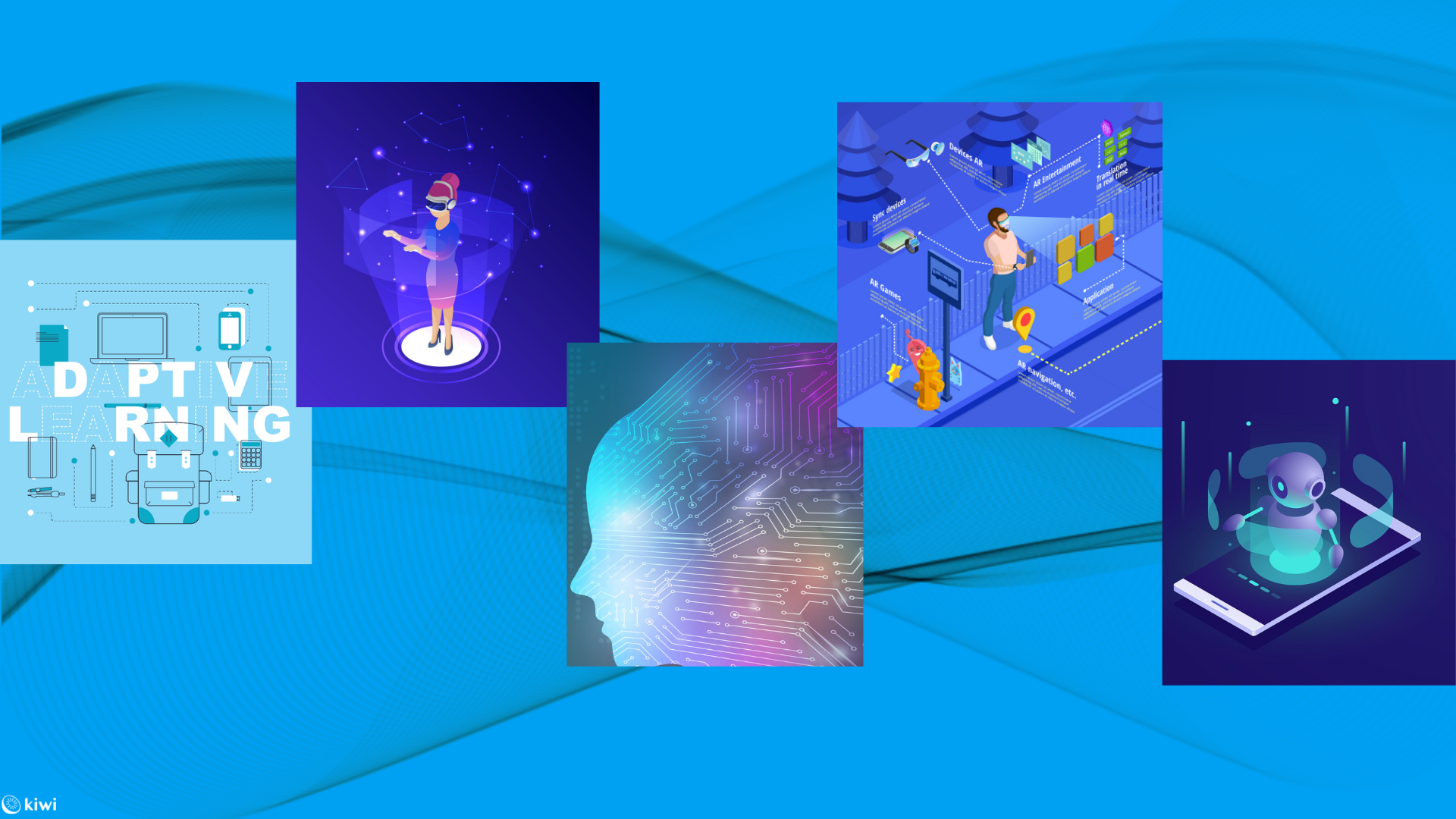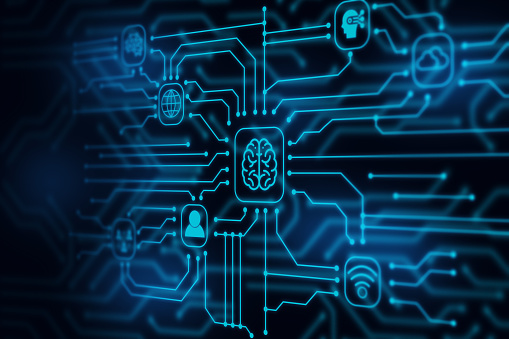29 Mar

We know we’ve been raging about eLearning, but we genuinely believe it is the future – actually, no, scratch that – it is the present of learning, and it’s not going anywhere soon. In fact, new technology trends arise every year in eLearning.
So let us go through the technology trends that are shaping eLearning right now, and how they aid workplace education in a neat, cost-effective way:
1. Virtual Reality (VR)/Augmented Reality (AR)/Mixed Reality (MR)

VR, AR, and MR are growing rapidly day by day as important methods of implementing learning content and unlocking possibilities that before now were restricted to our imaginations.
AR-technology is a great facilitator of the educational process. What augmented reality does is “enrich” real objects with other capabilities and characteristics. As of right now, there are many AR-applications that interact with the printed text, but it’s a technology that is always being updated.
VR’s main goal is to bridge the gap between theory and practice. As such, it assists in the learner acquiring knowledge through experience. One of the main benefits of virtual reality is its ability to cut distractions by blocking visual and auditory distraction factors so that one can deeply connect with the learning material. As a result, the interest of the learner is increased. These experiences not possible to explore in real life lead to effective team engagement that every company wants.
MR is the result of blending the physical world with the digital world. In 2019, it’s expected to efficiently deliver similar things like VR and AR and even more features. It is a totally immersive practice that makes distraction impossible since it requires the learners to wear an HMD (head mounted display) and motion controller. Through them, they can interact with their surroundings that are created by a mix of real and virtual worlds.
2. Adaptive learning

Adaptive learning is an online educational system that focuses on understanding the student and then adjusting the presentation of material according to the learner’s progress. Almost like a tutor, just that it’s computer-generated. Therefore, adaptive learning uses technology to personalize learning.
The adaptive learning system keeps track of what the learner does, analyzes their actions, and is capable of adapting the training the way that it better suits that person. For example, giving them access to more relevant learning materials if they’re not doing well.
Although automated, adaptive learning technology still requires a lot of human contribution, since humans create the content. And there’s a lot of content to be made since you should have materials ready for every scenario, for every action the learner might take.
Adaptive learning still has a long way to go to advance so far as to be used in the academic level, but ‘when applied with diligence and care, it expands an instructor’s capacity to improve learning outcomes for every single student.’
3. Microlearning

In the last two decades, probably influenced by the mobile revolution, the average human attention span has dropped from 12 seconds to 8 seconds. This can be what leads to the unfortunate fact that only about 15% people successfully apply what they learn, and within 30 days, they forget the majority (80%) of the content they learned. Simply put, when people can’t focus while learning, they won’t be able to retain that knowledge and apply it effectively. This is why a need for innovative learning methods has arisen.
Microlearning is such a non-traditional learning strategy that has been shaping eLearning. The innovations of microlearning are that it is learner-centric, which means the learner has the power to choose the content they want to learn. Moreover, it increases employees’ performance since it is accessible as bite-sized content at a time the learner wants. It is a cost-effective training tool and is very engaging since it includes multimedia elements and motion graphics.
In microlearning, a learning piece of content should handle one purpose per lesson, and every lesson should end with a test to chunk the material. This way, the student absorbs the material step by step so that they can be sure that the parts are learned correctly.
4. Artificial Intelligence (AI)

Just like in any other field, Artificial Intelligence has risen up in the eLearning area too. Organizations are now offering innovative solutions where bots are able, as well as during the courses.
Artificial Intelligence will be used to guide learners on their learning path, to predict learner behavior, and to personalize the learning. And this enhancement of the learning process will be helped by new (virtual) learning assistants. These voice-built bots aim to help everyone who needs to gain knowledge fast and easy.
As such, AI will develop eLearning by supporting trainees in both the learning process and in case of a special need. AI has reconstructed the learning scene in recent years that it has been a dominant trend, and we look forward to what advancements we’ll see.
5. Big Data

Big data, in terms of the eLearning industry, is the data that is created while learners take an eLearning course or training module. Eg. when an employee does a training module on company policies, all the data produced during the eLearning course such as their progress, assessment results, and social sharing is “big data”. And then, that data is collected by the organization.
Big data will impact eLearning in great ways. First of all, it will impact it through collecting and analyzing all of the learner’s steps. Each time they make mistakes or are unable to acquire knowledge properly, it will be detected. Afterward, as a help towards that, you will be able to offer adjustments to fix the situation.
Moreover, Big Data will help create new eLearning approaches. This allows for new learning strategies (such as synchronous and asynchronous eLearning) to arise so that we’re not stuck with the traditional learning strategy with which one can’t estimate how everything will end. Contrarily, with big data, eLearning experts track a learner throughout the entire process of learning, from start to finish.
These were the 5 most exciting and innovative technology trends that have been shaping eLearning. They keep getting more advanced every day, and us interested in Employee Training couldn’t be more thrilled.
Most popular posts
-
 Online Learning vs Face t...
141.6k views | posted on April 5, 2019
Online Learning vs Face t...
141.6k views | posted on April 5, 2019
-
 Top 10 Types of Employee...
117.9k views | posted on May 26, 2019
Top 10 Types of Employee...
117.9k views | posted on May 26, 2019
-
 10 Must-Have Skills and Q...
43k views | posted on July 8, 2019
10 Must-Have Skills and Q...
43k views | posted on July 8, 2019
-
 Induction Training – How...
24k views | posted on July 1, 2019
Induction Training – How...
24k views | posted on July 1, 2019
-
 9 Most Effective Training...
21.1k views | posted on July 15, 2019
9 Most Effective Training...
21.1k views | posted on July 15, 2019
Follow us